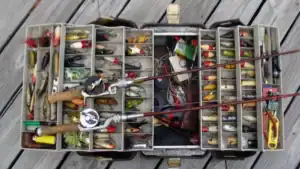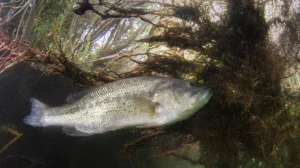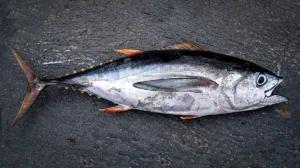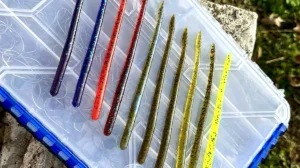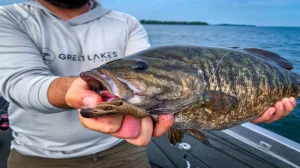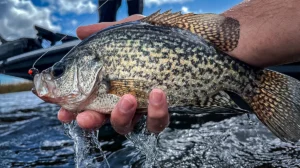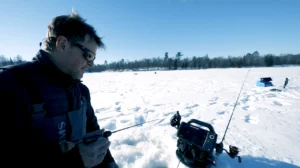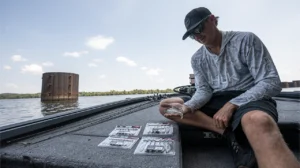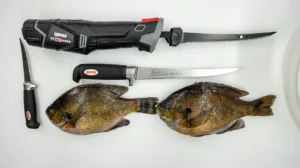Whether you’re just starting out in fishing or you’re a seasoned angler who has been at it for decades, spinning gear is an essential tool. Though spooling a spinning reel can be a little tricky, it’s something we should all learn to do. If you are able to avoid just a few little issues, spooling up really isn’t too messy of a process. Follow along while we show you step by step how to spool a spinning reel.
WHAT IS LINE MEMORY?
Most new reels need to be spooled with line before you can fish with them, though some reels come pre-filled these days. But even if a reel is already spooled, it’s only a matter of time until you’ll have to peel that line off and spool the reel up again. This is because line deteriorates with age and develops troublesome amounts of memory, or coils, along the way.
Memory, as it pertains to fishing line, has to do with the way line takes on the shape of the spool that it’s wound onto. Line manufacturers spool fluorocarbon, monofilament and braided lines onto small spools in the factory to package them for sale. As soon as these lines are wrapped around the spools, they begin to develop memory.
You can see this memory when you open the spool and peel a little line off. You’ll notice the line coils up if you allow it to slack. Braided lines typically have far less memory than monofilaments and fluorocarbons. You can expect all fishing lines to have some memory at least. If you are unsure what to pick, see our tips on choosing a line for spinning reels.
THE TRICK TO SPOOLING A REEL
When spooling your spinning reel, you want to avoid line twist. You can do this by orienting the spool of line in the right way. This will let you use the line’s memory from the spool to your benefit as it fills up the reel.
If you lay your spool of line down flat, you’ll notice that the line either comes off the spool in a clockwise or counterclockwise motion. To fill a spinning reel properly, you’ll want the line to come off the spool in a counterclockwise motion. In many cases, the label on the spool will be facing up if you have this right. Although, that is not always the case.
Having the line come off the spool in a counterclockwise motion allows you to take advantage of the line’s natural memory, instead of fighting it. The line spool and the reel spool have different diameters though, causing some resistance from the memory of the line as it’s wound onto the smaller spool. However, the coils will at least be winding in the right direction to allow the line to spool onto the reel as naturally as possible.
REMOVE OLD LINE
If you’re spooling a new reel, you obviously don’t need to do this. If there’s line already on the reel, you’ll need to remove it. Doing this as effectively and efficiently as possible is key, especially if you’re spooling multiple reels at once.
There are some great line removal tools on the market, like the Rapala Compact Line Remover and the Berkley Line Stripper. You can also use a standard drill to remove fishing line from a reel. Simply attach an object like a metal clothes hanger or plastic bottle to the end of the drill so that the line can wind onto the object as the drill spins.
TOOLS TO SPOOL
Additionally, there are some tools you can use to help you spool up a spinning reel, like the American Premier Ultimate Line Winding System. While the science and engineering behind these tools are quite impressive, they aren’t necessary for most of us. Still, if you’re interested, they are pretty cool. And they are helpful if you have multiple reels to spool.
Now, let’s go through the step-by-step process of spooling up a spinning reel.
HOW TO SPOOL A SPINNING REEL
STEP 1: RUN LINE THROUGH YOUR FIRST ROD GUIDE
Though you can technically spool a spinning reel without putting it on a rod, it’s much easier to do so if you go ahead and put the rod and reel together and then run the line from your spool through the first guide of the rod, down to your reel.
STEP 2: OPEN THE BAIL
First, you need to open the bail of your spinning reel. This is one of the easier things to forget to do. While you could technically run your line under the bail and secure it to your spool, it’s much easier to work with the bail open. If you fail to do this and attach the line to your spool where the bail can’t come down on it, the reel will spin freely without spooling any line.
STEP 3: SECURE YOUR LINE TO THE SPOOL
Next up, you’ll need to secure your line to the spool. This can be a little tricky, especially with braided line. Tying a simple slip knot in monofilament and fluorocarbon is usually sufficient, as this line is able to stretch and grab the spool as it is cinched down. However, braid has almost zero stretch, so it will simply spin on the spool if you try to tie it directly to the reel.
There are a couple ways to fix this. You can tie mono on first and use a small piece of the stretchier line as backing on the reel. Then use a line-to-line knot to add braided line if you’d like.
Another option: You can use a little piece of electrical tape to secure your braid. You’ll still tie a slip knot and then cinch the braid down as tight as you can. Then add a small piece of electrical tape to secure the line onto the reel. Just make sure the tape lays down flat on the spool.
**The reel I used in this piece is the SEVIIN GS Series Spinning Reel. The designers of this reel have solved this issue once and for all, by incorporating a band of rubber-like material around the spool to give the line something to grab hold of–even braid. Well done.
STEP 4: CLOSE THE BAIL AND MAKE SURE THE SPOOL IS ORIENTED CORRECTLY
Before you start to spool your line, you must first close the bail. Then make sure that the spool of line is oriented so that the line comes off in a counterclockwise motion.
STEP 5: APPLY TENSION TO THE LINE
Now, with the hand that is holding the rod, take the line above the reel between your finger and thumb and apply tension to the line.
STEP 6: TURN THE REEL HANDLE
Begin spooling the line onto the reel by turning the handle, while still applying tension to the line. You’ll continue this process until the spool is a little over 3/4’s of the way full. Be sure not to overfill the reel, as this will create a plethora of problems. A good rule of thumb is to leave 1/8-inch of space or more along the edge of the spool.
STEP 7: FINISH RIGGING YOUR ROD AND BAIT
Once you have spooled your reel completely, cut the line and finish running the tag end through your rod guides. Then tie on your leader or favorite bait and you’re ready to start fishing.
HOW TO CAST A SPINNING REEL
We’ve also put together a step-by-step guide on how to cast a spinning reel. We go over the basic casting method, as well as how to skip a bait and drop a bait effectively with spinning gear. Additionally, we discuss ways to prevent line twists and deal with them if they do develop.
CONCLUDING THOUGHTS
Spooling a spinning reel can seem a little intimidating if you’ve never done it before. It can be very aggravating if you do it incorrectly. However, if you ensure that your spool of line is oriented correctly before reeling the line onto your reel, you’ve already avoided the biggest headache.
Make sure, too, that you attach the line to the reel securely with the bail open. Though cinching a slip knot down onto the spool will work with most monos and fluoros, you’ll need a little tape to do it right if you’re going with braided line. A tip: a little piece of tape won’t hurt with any line type, as long as you make sure it presses down smoothly.
Then, with the line secure and the spool turned in the right direction, begin reeling line onto the reel. Be sure to apply a little tension as you do so. Make sure not to overfill the reel. Once the reel is most of the way full, cut the line and you’re done. Finish rigging the rod up, tie on your bait and get to fishing. It’s really that easy. Or, at least, it should be. Hopefully with the help of this article, you’ll feel confident in how to spool a spinning reel.
PRODUCTS USED IN THIS ARTICLE:

















